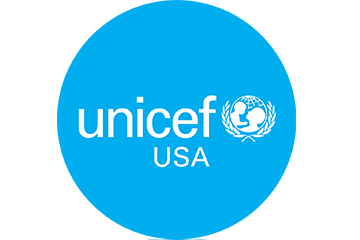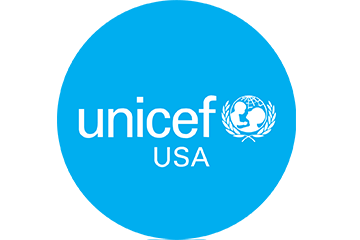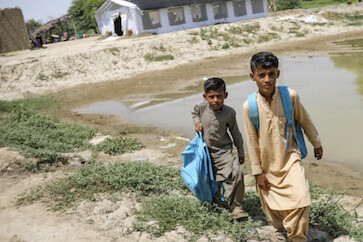The families and children of Ukraine have experienced many months of displacement, fear and trauma. UNICEF is on the ground helping the children fleeing Ukraine and those who have remained inside the country.
The families and children of Ukraine have experienced many months of displacement, fear and trauma. Children have been killed, injured and separated from caregivers. Houses, schools and hospitals have been destroyed. There is limited access to water, electricity and other essentials.
The war has displaced more than half of Ukraine’s children. An estimated five children are in need of urgent humanitarian assistance.
UNICEF is committed to providing support for children who remain inside Ukraine as well as children who have fled across borders, and helping to secure a better future for families.
About the crisis in Ukraine
Since the war, UNICEF has scaled up its staff in Ukraine and in refugee-hosting countries to address the urgent needs of families and children. UNICEF’s humanitarian aid focuses on all areas of child need, including safety, nutrition, health care, safe drinking water and education.
UNICEF is working hard to address immediate concerns such as lack of food and safe water while also safeguarding children’s rights and long term well-being, particularly by protecting their continued access to education.
Countries like Poland, Moldova, Romania and Slovakia have received the highest numbers of refugees. The governments in these refugee-hosting countries are working to accommodate children within their national school systems and to register child refugees for temporary protection.
UNICEF is working with 13 refugee-hosting countries in all to support their response to the war in Ukraine.
Nazar, 13, and his classmates are able to attend their local school in the village of Olyzarivka, Ukraine, despite heavy damage. ©UNICEF/UN0689690/Gilbertson – Highway Child
Ukraine: How many refugees are there and where will they go?
When the war in Ukraine broke out on Feb. 24, 2022, millions of Ukrainian families fled the country, fearing for their lives, and their numbers continued to rise during subsequent months. By September 2022, there were 3.9 million displaced Ukrainians inside and outside the country: seven million people internally displaced and 6.9 million recorded refugees across Europe.
Most refugees who fled Ukraine are staying in neighboring countries such as Poland, Moldova, Romania and Hungary. Poland alone has registered 1.3 million refugees for temporary protection. Other refugees have gone to Croatia, Italy, Montenegro, Bulgaria and Serbia.
Stories of UNICEF assisting Ukrainian refugees
Here are a few stories about how UNICEF is helping Ukrainian refugee children through its programming.
UNICEF helps schools in Poland accommodate Ukrainian children
Emila, 7, and Sofia, 12, of Irpen, Ukraine, fled to Krakow, Poland, with other family members, including their grandmother Alla. The family is living in temporary accommodation provided by the municipality and attend a UNICEF-supported school, along with a many other children from Ukraine. UNICEF’s support enables refugee-hosting schools to hire intercultural assistants, expand their computer labs and purchase additional learning materials for students.
Emilia, 7, a refugee from Irpen, Ukraine, reviews learning materials she received her first day at her new school in Krakow, Poland. ©UNICEF/UN0697246/Korta
Emergency shelter for Ukrainian children fleeing the country
Fifteen-year-old Alex of Cherkasy was forced to flee Ukraine with his mother and younger brother in April 2022. Their long and dangerous journey brought them to Bucharest. where a volunteer told them about the UNICEF Blue Dot hub in Brasov. They eventually made it to the hub, where they received temporary shelter and accessed emergency services.
There are 40 UNICEF-UNHCR Blue Dots operating along transit routes between Ukraine and refugee-hosting countries. The support centers are helping thousands of Ukrainian refugee families every day.
“You won’t get anywhere if you stay still; you have to move, to travel, to meet people,” Alex, a 15-year-old teenager who fled Ukraine with his mother, says from the UNICEF-UNHCR Blue Dot hub in Brasov, Romania. ©UNICEF/UN0687441/Raica
Helping Ukraine’s children learn online and in person
Anya is a ten-year-old girl from Horenka, a village in the Kyiv region that was heavily damaged in February when the village became part of the front line of the war. Anya will not be able to resume learning, as her school has remained closed. Many families fled Horenka when it became impossible to stay, yet teachers are determined to continue educating students, whether in bomb shelters or in other countries. UNICEF is working with partners to support a range of efforts to ensure that the children of Ukraine can get back to learning — in classrooms, online and through community-based alternatives.
Local children and teenagers stand among the ruins of their school in Horenka, Ukraine. ©UNICEF
The current situation for children in Ukraine
- 5.3 million children of Ukraine are in need of assistance
- 4 million kids in Ukraine are unsure if they can continue their education
- Nearly 100 health centers and 870 education centers have been destroyed or damaged
- Over 2 million children under 5 years old and pregnant and breastfeeding women inside Ukraine require nutrition services
How UNICEF has helped Ukrainian children
Durng the first several months of war, UNICEF:
- provided mental health and psychosocial support to over 1.4 million children and caregivers
- distributed emergency cash transfers to 350,000 children, including 35,000 children with disabilities living in 120,000 households
- established access to safe water for 3.4 million people
- provided sanitation and hygiene to 450,000 people
What are the specific risks to children when separated from their families?
Children forced to flee their home face a risk of becoming separated from their families. When children are unaccompanied or separated from their families, they face an even higher risk of sexual exploitation and abuse, gender-based violence and human trafficking.
How does UNICEF provide relief to support Ukraine refugees?
UNICEF is working with partners in refugee-hosting countries to ensure children receive health, nutrition, education and protection after fleeing their homes. Some highlights of UNICEF’s recent work include:
Working to give children a healthy childhood
- reaching thousands of new mothers with health information about infant and young child feeding in Romania
- partnering with health care providers in Moldova to provide Ukrainian refugee children with specialized health and hospital services
- providing primary health care services to children and pregnant women in the Slovak Republic, including vaccination in anticipation of the new school year
- partnering with hospitals in the Czech Republic to support Ukrainian doctors, nurses and other health professionals in increasing access to primary health care services to Ukrainian refugee children and their caregivers
Providing protection for the children fleeing Ukraine
- providing shelter for thousands of Ukrainian refugee families across seven countries bordering Ukraine
- reaching millions of refugees with life-saving messages about their rights and access to critical services
- providing emergency cash assistance to vulnerable families in refugee-hosting countries
- registering children crossing the border to neighboring countries and referring them to relevant authorities for adequate case management
Ensuring children’s right to an education
- working with key partners in refugee-hosting countries to ensure all Ukrainian refugee children are enrolled in national school systems and can continue to learn in accredited education systems
- supporting preschools in the Slovak Republic by providing grants to open thousands of new preschools for Ukrainian children
- launching an online back-to-school campaign in Poland to educate children and their caregivers about available learning opportunities and the options to continue formal education
- establishing summer camps in Romania where children can continue to learn and play
On Aug. 24, 2022, 10-year-old Veronika and her mother, Svetlana hug each other while standing in front of their home in Krakow, Poland. The family fled the war in Ukraine and plans to continue living in Poland until it is safe to go back to their homeland. ©UNICEF/UN0694102/Moskalenko
What can I do to help save Ukraine’s children?
As winter approaches and the situation in Ukraine continues to deteriorate, more support is urgently needed to help fund UNICEF’s response in and around Ukraine. Donate Now.
Frequently Asked Questions
How can I help the children of Ukraine who have fled the war?
Millions of Ukrainian children have fled the war and are in need of urgent humanitarian assistance. UNICEF is on the ground working with partners to address needs in health care, education, nutrition and water and sanitation. Your donation will help the children in neighboring countries continue to learn, and access lifesaving health care, medical supplies and protection services.
What are the additional risks of fighting in Ukraine continues?
As winter approaches, UNICEF is bracing for an escalation of humanitarian needs. With decreased temperatures, children’s health, safety and survival will be at greater risk. Many Ukrainians have lost access to shelter, electricity or fuel, and others cannot heat their homes due to damage or destruction.
Which areas of Ukraine are most impacted by the war?
The entire country of Ukraine has been impacted by the war, with over 30 percent of the country displaced either internally or outside of the country. Eastern Ukraine has been most impacted. Many cities have been completely destroyed.
Further reading
Ukrainian Refugees Head Back to School in Poland
An estimated 2.2 million Ukrainian children are currently displaced. This story looks at how UNICEF is supporting a school in Poland to provide Ukrainian children the services and support system they need to continue learning in a new country.
Humanitarian Cash Transfers Provide Vital Aid for Ukraine’s Families
Since the war began, UNICEF has distributed $125 million in emergency cash assistance to families in Ukraine. Families use these cash transfers to meet their children’s most urgent needs. This story looks at the impact of this important program.
How UNICEF Built a Supply Pipeline to Support Response to Ukraine War
More than 8,500 metric tons of lifesaving items have been delivered to Ukraine since the start of the war, including health kits with medicine and first aid equipment and water purification tablets. This story offers a glimpse at how UNICEF kicked its supply operation into high gear to meet urgent needs.
Top photo: The local school in the village of Olyzarivka, Ukraine, opened to students in August despite being severely damage in February and March when the village was on the front lines of fighting. ©UNICEF/UN0689688/Gilbertson – Highway Child





